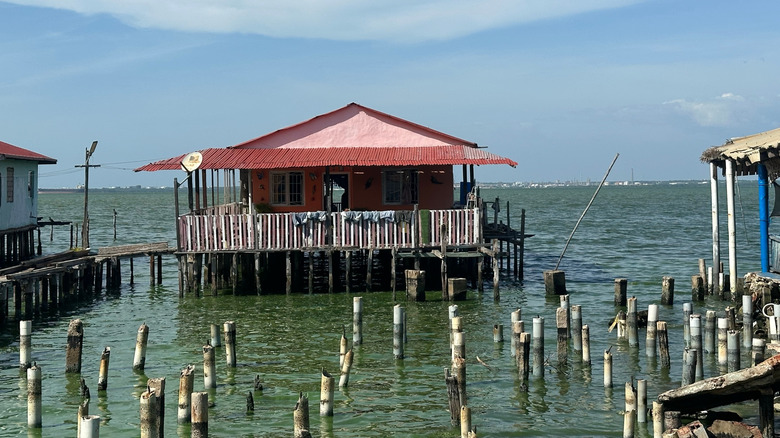
In northwestern Venezuela lies Lake Maracaibo, a vast and ancient body of water that can literally shock you. It's commonly called a lake, but it's technically more of a lagoon due to its connection to the Caribbean Sea via the Tablazo Strait. This geographical marvel covers more than 5,000 square miles and was formed around 36 million years ago. However, the reason behind its popularity is its title of "the lightning capital of the world," due to the nightly spectacle known as Catatumbo Lightning.
You may know that Florida's Siesta Beach is dangerous for its fatal lightning strikes, but Lake Maracaibo's illuminating spectacle is on another level. This natural phenomenon produces near-constant lightning storms that can last up to 10 hours per night. On average, lightning strikes here 140 to 160 nights a year, resulting in up to 1.6 million flashes annually. The frequency of these discharges has made the region a subject of fascination for meteorologists and tourists alike, and in 2014, it earned a Guinness World Record for the highest concentration of lightning on the planet.
Historically, the Catatumbo lightning show was so reliable that sailors in the Caribbean used it as a natural lighthouse, long before modern navigation systems existed. The glow of these storms could be seen from hundreds of kilometers away, helping ships find their way through dangerous waters. Today, a bolt is featured on the flag of the state of Zulia and carries folkloric significance for the region's Indigenous communities, like the Añu people who have built stilted villages on the lake's shallow edges.
Read more: 12 Destinations And Attractions That Should Absolutely Be Considered Wonders Of The World
Is Lake Maracaibo Worth Visiting?

Tourism to Lake Maracaibo is not popular on an international scale, and for many travelers, it may not be considered "worth it" in the conventional sense, but it depends on what you're seeking. If you're passionate about meteorology or environmental studies, watching the Catatumbo lightning firsthand can be worth the trip. A few eco-tours operate from Mérida or nearby towns and offer guided trips to view the lightning from safe, strategic points, like boats or stilt houses. However, keep in mind that the U.S. Department of State has a Level Four Do Not Travel advisory for Venezuela at the time of this writing, joining a list that just keeps growing in 2025.
The region also poses several concerns. Environmental degradation has made large parts of the lake polluted and unpleasant, with strong odors, oil slicks, and toxic algae in some areas. The region has been a hub of Venezuela's oil industry for over a century, and the crisscrossing pipelines and drilling operations have taken a heavy toll. Frequent oil spills, coupled with untreated sewage and agricultural runoff, have created an ecological disaster. Toxic algal blooms, known locally as "verdín," have turned parts of the lake green, killed fish populations, and made drinking water unsafe. In addition to Venezuela's ongoing security and political challenges, it would be wise to think twice before visiting this dangerous destination.
Ready to discover more hidden gems and expert travel tips? Subscribe to our free newsletter for access to the world's best-kept travel secrets.
Read the original article on Islands.












